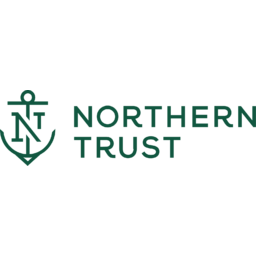
P/E ratio for Northern Trust (NTRS)
P/E ratio as of April 2024 (TTM): 16.0
According to Northern Trust 's latest financial reports and stock price the company's current price-to-earnings ratio (TTM) is 15.9962. At the end of 2022 the company had a P/E ratio of 14.4.
P/E ratio history for Northern Trust from 2001 to 2023
PE ratio at the end of each year
| Year | P/E ratio | Change |
|---|---|---|
| 2022 | 14.4 | -13.75% |
| 2021 | 16.7 | -1.85% |
| 2020 | 17.0 | 6.55% |
| 2019 | 16.0 | 27.48% |
| 2018 | 12.5 | -37.99% |
| 2017 | 20.2 | -1.42% |
| 2016 | 20.5 | 14.44% |
| 2015 | 17.9 | -11.35% |
| 2014 | 20.2 | -1.86% |
| 2013 | 20.6 | 15.19% |
| 2012 | 17.9 | 11.17% |
| 2011 | 16.1 | -20.31% |
| 2010 | 20.1 | 21.51% |
| 2009 | 16.6 | 11.95% |
| 2008 | 14.8 | -36.56% |
| 2007 | 23.3 | 17.72% |
| 2006 | 19.8 | 2.96% |
| 2005 | 19.3 | -8.8% |
| 2004 | 21.1 | -16.02% |
| 2003 | 25.2 | 45.67% |
| 2002 | 17.3 | -37.21% |
| 2001 | 27.5 |
P/E ratio for similar companies or competitors
| Company | P/E ratio | P/E ratio differencediff. | Country |
|---|---|---|---|
 Capital One COF | 11.2 | -30.24% | 🇺🇸 USA |
 Bank of New York Mellon BK | 13.5 | -15.75% | 🇺🇸 USA |
 State Street Corporation
STT | 10.7 | -33.18% | 🇺🇸 USA |
 WaFd Bank WAFD | 7.63 | -52.29% | 🇺🇸 USA |
 New York Community Bank
NYCB | 0.7650 | -95.22% | 🇺🇸 USA |
How to read a P/E ratio?
The Price/Earnings ratio measures the relationship between a company's stock price and its earnings per share. A low but positive P/E ratio stands for a company that is generating high earnings compared to its current valuation and might be undervalued. A company with a high negative (near 0) P/E ratio stands for a company that is generating heavy losses compared to its current valuation.
Companies with a P/E ratio over 30 or a negative one are generaly seen as "growth stocks" meaning that investors typically expect the company to grow or to become profitable in the future.
Companies with a positive P/E ratio bellow 10 are generally seen as "value stocks" meaning that the company is already very profitable and unlikely to strong growth in the future.